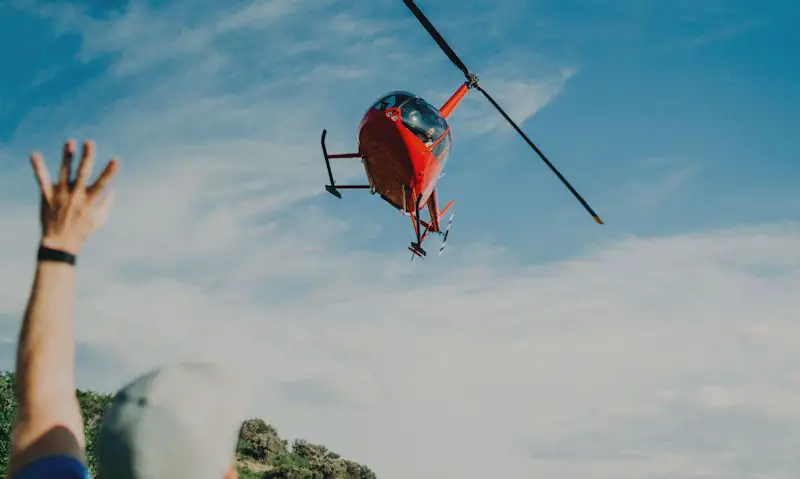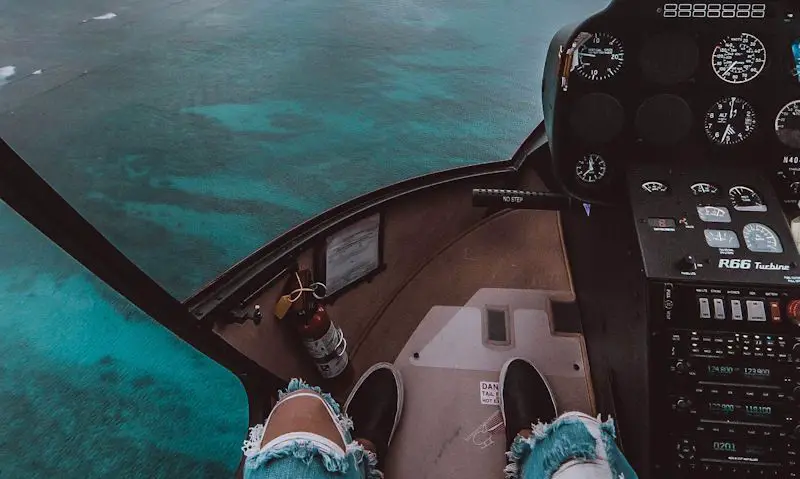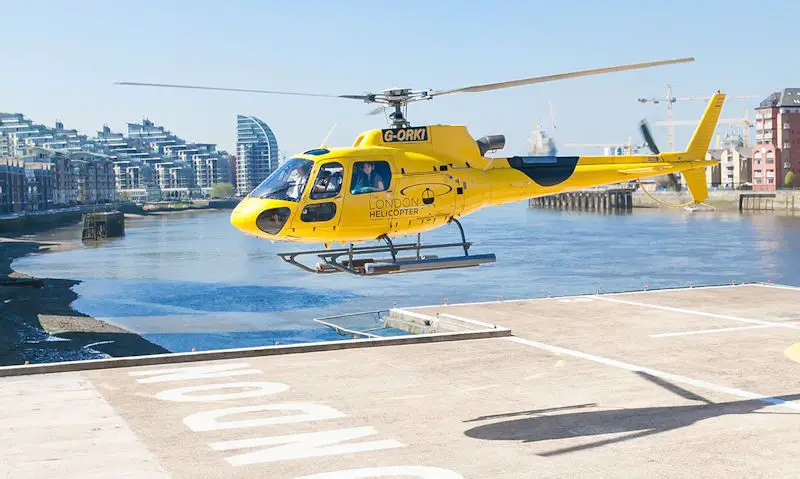Can a helicopter fly sideways
All helicopters can fly sideways with a simple correction on the cyclic; manoeuvre the stick on a 45 degree angle to flow gently over to the left or right.
To manoeuvre the helicopter on a sideways angle well the heli maintains its forward facing position; you would gently move the cyclic - or stick - over to the left or right on a perfect 45 degree angle. It will come into play well hovering, well a hard left or right will result in loss of attitude.
How you can fly a helicopter sideways relies only on a small correction on the cyclic, with no other controls coming into play.
Though, if you're hovering to land or take off then that wouldn't be true as all controls are used simultaneously to steady the helicopter.
When making use of the sideways manoeuvre; its possible the pilot is countering the wind as it forces the helicopter left or right.
Its then only a matter of forcing the cyclic left if the heli or going right... and vice-versa.
Flying sideways at speed is reduced as the angle in the rotorhead doesn't allow full pitch.
Though, its still possible to move at a suitable speed at high attitude for the purpose of taking video for film or TV purposes when flying sideways.
Reasons to fly sideways in helicopter
When manoeuvring the helicopter into a sideways position; usually this would take place at a slow speed or hover position to land at an exact point on the helipad or ground.
Aerial photography is big in helicopter services at the moment, so again the photographer or videographer would need the best shot he or she can get.
Therefore, that requires the pilot to point the rear door or passenger side front door in the position the director needs to point at.
That would remove all areas of the helicopter interior and outside decor out of the frame.
Rarely can photographers or those making film take pictures or record in the same heading as the helicopter.
In that case, its a matter of spinner the helicopter around 45 degrees as to allow the passengers to point there devices in the direction the helicopter is heading.
Sideways speed loss
It would not be possible to fly sideways in a helicopter at the speed you can reach when going full cruise speed in a forward motion.
In order to fly forwards at speed, the angle of the rotorhead tilts forward in order to force the air through the blades - which is also helped as the heli leans forward also.
However, the tilt in the rotorhead does not tilt so far as it does when going forward, thus you can't go as fast when going sideways or backwards.
TV or film requires shots out of the helicopter sideways, so suitable speeds are achieved when say they're filming running, chase scenes or slow moving vehicles angles.
Manoeuvre sideways in hover
Important as it is to fly sideways comes in to play at the point of hovering; that can be when you take off or when you're coming in to land.
At this point you will be tackling winds - regardless of how fierce or gentle they're - by countering the directions the wind forces the helicopter, you will be using the cyclic at all times to the opposite way.
And if the helicopter is being blown to the left, the small corrections on the cyclic will be required to force the helicopter in the opposite way to the right
For example, let's take a clock with 12 the forward position of the heli:
If the helicopter is being forced to the 9 o'clock position well still facing at 12; then the pilot would direct the cyclic to the 3 o'clock position to maintain a steady hover.
That could be a perfect 45 degrees, or say a 20 or 60 degrees, or anywhere in between.
Forwards to sideways at speed
One way a helicopter can fly sideways near to the average cruise speed it would normally take, is by manoeuvring the chopper to the side well at full speed.
That might not be true in a sense of the helicopter flying sideways, but it does give it that vital angle as required by the angle that the chopper needs to be in.
And that would usually be the requirement of the people who are filming through the door.
Going from 90 degrees to a perfect sideways angle of 45 degrees can still happen but for a limited time only.
When the helicopter is at full speed before turning into an angle, the 45 degree position would happen for a short while before the helicopter loses air speed.
Hard turn in loss of attitude
When flying the helicopter at say an attitude of 2000 feet, its only here the pilot can go sideways at full tilt in the cyclic in a safe environment.
You see the harder you push the cyclic - or stick - left or right it forces the helicopter into a downward spiral.
And so when the pilot needs to turn quickly and dramatically, they will do so by turning left or right on the cyclic as the whole helicopter in turns follows over on a angle.
That manoeuvre is assisted with use of the peddles that controls the smaller tail blade.
If only using the the cycle on a 45 degree angle well going full speed ahead, this will result in the helicopter spiraling down and down with no purpose.
It could also result in stalling under curtain circumstances; so the answer to that is using the peddles simultaneously as you're correcting the cyclic to make a safe and smooth turn.
Summarize
Basic principles of how can a helicopter fly sideways relies heavily on the cyclic - or what most people know it as... the stick.
The more force put on the cyclic to go left or right will force the helicopter to go faster, all while - well going left or right the helicopter still faces forwards.
However, the more pressure put on the cyclic will result in the helicopter losing attitude, and so would be deadly manoeuvre to pull at a low attitude.
Its only when the pilot is flying high at a fast cruise speed will he or she turn hard left or right on the cyclic to change direction and attitude.



